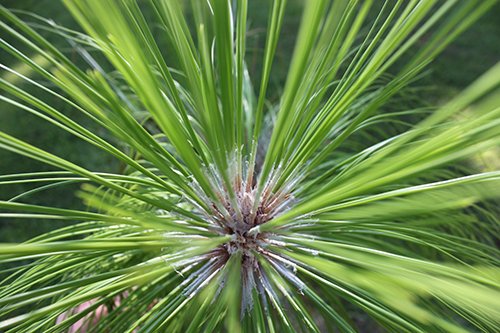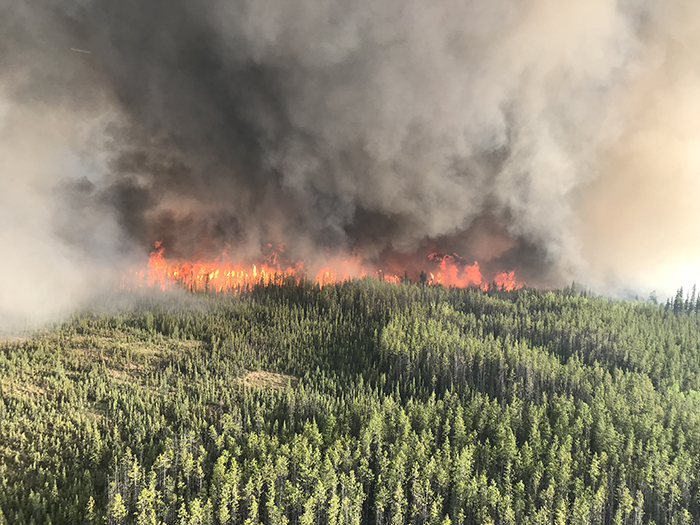Lauren Cooper, Chief Conservation Officer at SFI
With recent headlines, it’s not as often one hears the words “good” and “fire” used together in a sentence. Indeed, communities across North America are grappling with more frequent and destructive wildfires. It can be difficult to see through the smoke and understand that sometimes fire can be beneficial. Fire presents both challenges and opportunities across American and Canadian forests.
In the southeastern U.S., controlled burns are essential for regenerating longleaf pine forests, now endangered due to fire suppression. In contrast, the boreal forests of Canada naturally experience intense wildfires that are becoming increasingly unpredictable due to climate change. While these fires pose significant risks, strategic sustainable forest management, including prescribed burns and fuel reduction, can mitigate threats and promote resilient landscapes.
We must be open to fire as a forest management practice. Forest fire can have a spectrum of impacts—from being catastrophic and damaging to being a beneficial disturbance that can encourage healthy forests and resilience. The SFI Forest Management Standard emphasizes fire resiliency and includes limiting the susceptibility of lands owned or managed by certified organizations to the unwanted impacts of fire.
U.S. Southeast Longleaf Pine
 Longleaf is a rather remarkable pine tree: it can live for hundreds of years. The tree has uses as utility poles and to produce lumber. Its needles, which can grow as long as your forearm, are useful too; some Indigenous communities, including the Alabama-Coushatta Tribe in Texas, weave the needles into baskets, and gardeners prize longleaf pine needles as an attractive mulch for erosion control and to block weeds.
Longleaf is a rather remarkable pine tree: it can live for hundreds of years. The tree has uses as utility poles and to produce lumber. Its needles, which can grow as long as your forearm, are useful too; some Indigenous communities, including the Alabama-Coushatta Tribe in Texas, weave the needles into baskets, and gardeners prize longleaf pine needles as an attractive mulch for erosion control and to block weeds.
Forests of longleaf pine, a southern yellow pine tree, once stretched across 90 million acres of the U.S. southeast, from Virginia to Florida and out to the piney woods of Texas. Today, the longleaf pine is an endangered species. Longleaf pine forests shrunk to just three million acres and have since made a modest comeback, now covering five million acres. The main reason for this pine’s disappearance: the suppression for more than a century of fire from the landscape. This species requires fire to grow, which creates optimal conditions for germination. The thick bark on older trees prevents them from burning.
“This is truly a forest that fire made,” Carol Denhof, president of the Alabama-based Longleaf Alliance, told the attendees at the Sustainable Forestry Initiative annual conference in Atlanta this summer. “It will not exist without the use of fire in the system. We preach the word of good fire.”
The controlled use of fire to promote longleaf pine has many benefits. The Bobwhite Quail, gopher tortoise, eastern indigo snake, Red-cockaded Woodpecker, gopher frog and reticulated flatwoods salamander are just some of the species that thrive in a longleaf pine forest. To expand the habitat of these species, it is not enough to just plant longleaf pine trees, according to Carol Denhof.“Without fire, those longleaf stands that have been freshly planted will eventually become something else,” Denhof said. “They will not be longleaf for very long. We work a lot with private landowners, and many of them don’t have resources or knowledge or capability to implement fire on their lands.” The Alliance helps landowners bring fire into their forests to regenerate longleaf pine and has even created a mascot: a Bobwhite Quail named Burner Bob, who travels to communities with an oversized blowtorch to espouse the uses of fire as a forest management tool.
Canadian boreal forests
Forest fires are also a way of life in another forest ecosystem: the vast boreal forests that stretch across Canada. Intense fires that ascend from the ground and spread to the canopy are a natural disturbance regime, and suppression efforts will never eliminate fire from this forest, according to Dr. Jen Beverly, Associate Professor of Wildland Fire at the University of Alberta.
“It’s amazing. It’s a spectacle,” shared Beverly, who earlier in her career served on a helitack crew, a team of firefighters transported by helicopter to wildfires. “I saw lots of this fire, and it’s really quite phenomenal… Until it impacts something that you care about.”

Photo credit: Alberta Forestry and Parks
Wildfires engulfed forests across Canada in 2023, torching a record 17 million hectares, an area larger than Greece, and forced mass evacuations. This amount of area burned, many times the annual average, underlined one lesson for Beverly: it is now impossible to predict when a fire will occur. “We can no longer rely on the past to prepare for the future,” she said. However, her team does have suggestions on how to cope with wildfire.
By studying fuel–trees and other things that can burn–her team is able to map the threat from fire. Once communities know what local pathways could spread wildfire, residents can take steps to “harden” their properties, so they are less likely to burn, Beverly said.
Beverly’s research offers some glimmers of hope. For one, fires since 2010 have reduced fuels, lowering the threat of catastrophic fire in some forests. Analysis of Canada’s record 2023 fire season shows that in some places, the oldest forests were more likely to burn. By cutting some of the oldest trees, managers may be able to reduce the threat from forest fires.
Looking forward
For millennia, Indigenous communities have used fire as a forest management tool across North America. Fire presents risks but can also occasionally offer benefits. Careful planning can keep fire from threatening communities. In some instances, harnessing fire in the form of prescribed burns can help forests regenerate.
The future will present both challenges and opportunities for forests in addressing wildfire. The social and political arena in which forest management takes place will be shaped by the converging trends of intensifying climate change, population and economic growth, and pressures on land use. We expect higher scrutiny on the forestry sector across all aspects of management that influence fire quantity and intensity: in prescribed fire, risk mitigation, catastrophic losses, restoration, and responsibility for forest decision-making.
There is also an enormous opportunity to grow public awareness about the many benefits that well-managed forests deliver to society in fire risk reduction, fuels management, and the value of controlled fire. SFI is uniquely positioned to contribute to this work with our footprint (more than 360 million SFI-certified acres/147 million hectares), which allows us to forward solutions directly and at scale, our broad and diverse network, and the science-based approaches supported by the SFI Standards.
